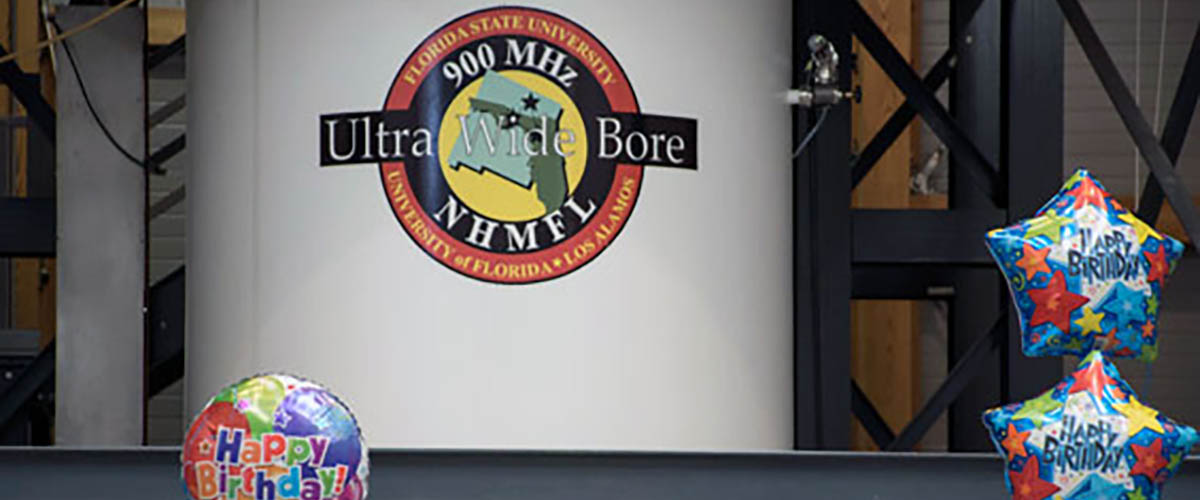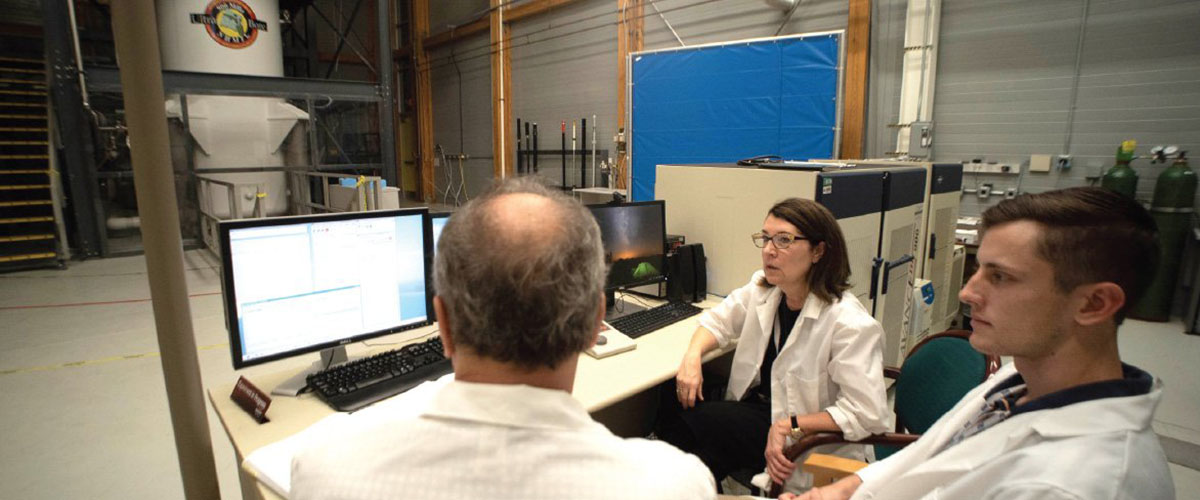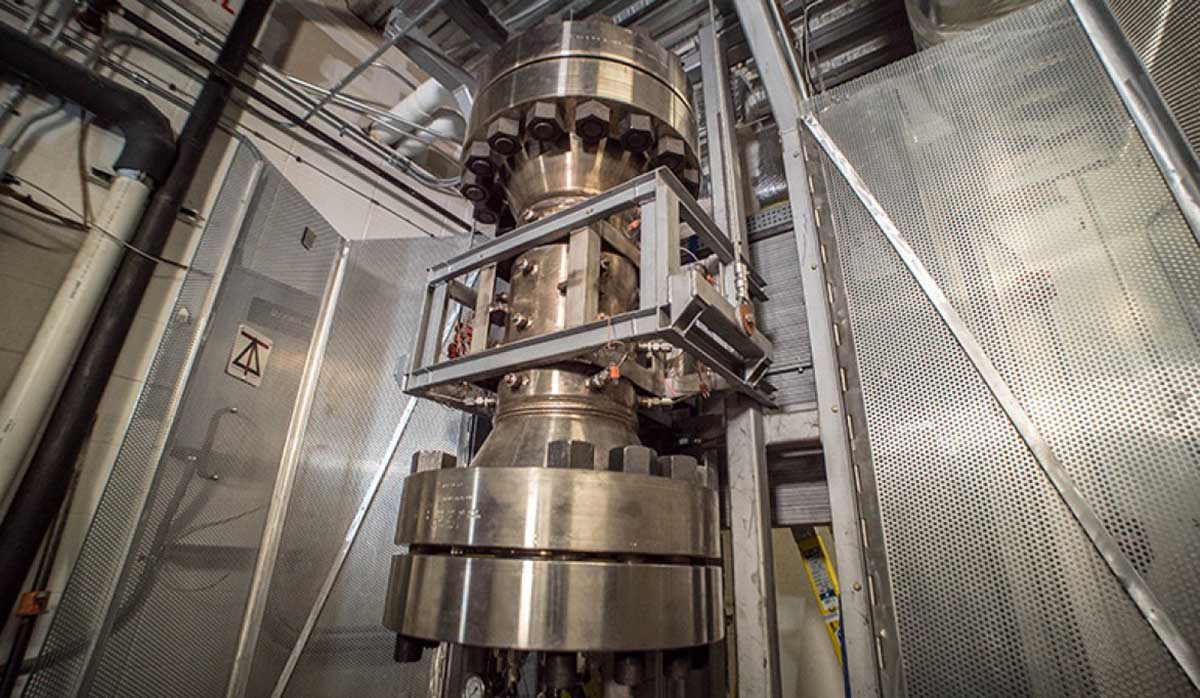In the early 1990s, scientists at the National MagLab embarked on a quest to join two drastically different magnets into a single, world-record instrument that would enable both new physics and cutting-edge biological research.
Initially, their proposal seemed as mythical as a centaur.
That's because magnets vary in shape, size and technology, depending on their scientific application. Physicists want powerful, high-field magnets to bring about strange, atomic-level phenomena in the materials they study. They don't much care if the field strength fluctuates a bit during their experiments, and typically use resistive magnets.
Biologists, on the other hand, conduct experiments using nuclear magnetic resonance (NMR), which requires exceptionally stable fields that deviate less than one millionth of a tesla. (Tesla, or T, is a unit of magnetic field strength; a typical MRI magnet, for example, has a field of 2 or 3 teslas). Biologists typically use magnets, built with special superconductors, that aren't as strong as their resistive cousins, but create more homogenous fields.
The plan was to design and build an entirely new kind of magnet, dubbed the Series Connected Hybrid (SCH), that would couple a superconducting magnet with a resistive magnet, in series, to create the world's strongest NMR machine that could also be used as one of the strongest magnets for condensed matter physics. It would be a huge challenge, because the two magnets are made with different materials requiring entirely different infrastructures. It was like crossing a manatee with a cheetah to win a swim race.
The idea sounded intriguing, even promising — in theory. But was their plan feasible? Or would they end up with some kind of Frankenmagnet — a very interesting, novel, expensive, but ultimately useless magnet mongrel?
"There was initially a lot of pessimism around the potential success of the magnet," recalled Joana Paulino, a biophysicist who was involved on the NMR side of the magnet project. "Scientists were initially very conservative with their estimations on whether it would work."
Joining forces
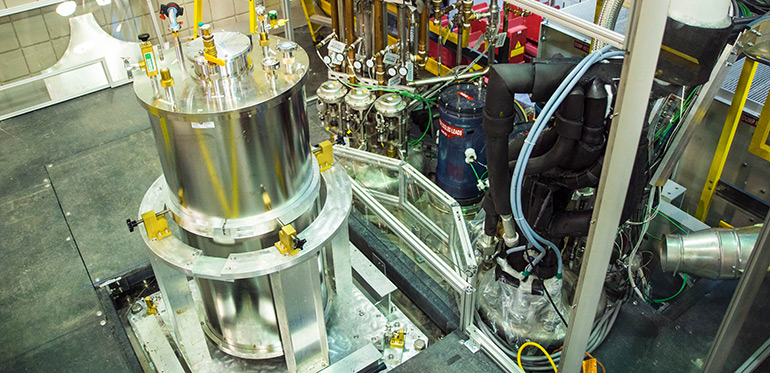
View of the cryostat mounted on top of the SCH (left) and cryogenic valves and supply lines to the SCH outsert magnet (background).
Image credit: Stephen Bilenky
It wasn't the first time the MagLab had attempted to build a hybrid magnet. In fact, the world's strongest continuous field magnet, built in 1999, is a hybrid that boasts a field of 45 teslas. But the 45-T is not nearly stable enough for biology experiments. The SCH needed to generate 36 teslas and have a supremely stable field, which would make it a unique, world-record instrument in its own right.
But could it be built?
Magnet engineers crunched numbers to determine if the plan looked good on paper. Their calculations worked out, suggesting a SCH magnet was theoretically simple.
William Brey, a physicist in the NMR group, explained that the SCH might even be a more technically sound hybrid than the 45-T because its series circuitry is more straight-forward than the parallel circuit used on the 45-T. That would come in handy when the magnet would have to shut down rapidly due to a power surge or outage.
"The series hybrid design has the same current in all parts of the magnet, so it shuts down in the same predictable way each and every time," Brey said.
Given a green light by the engineers, magnet scientists set their plan in motion. However, building the SCH magnet meant combining more than just equipment. Teams from both magnet disciplines had to join forces, as well.
Members of the NMR group, who typically work with superconducting magnets, teamed up with members of the DC Field Facility, who operate the MagLab's high-powered, resistive magnets. Paulino quickly found this partnership was no match made in magnet heaven; the two teams didn't even speak the same language. While she and her teammates were familiar with self-sustaining superconducting magnets that (after an initial charge) require zero power to operate, staff from the DC Field Facility were used to pumping over 6.5 million kilowatthours of electricity through their magnets every month.
Brey explained that the DC Field Facility's power-hungry magnets create "noise" — irregular fluctuations in the current feeding the resistive magnet that obscure data on sensitive NMR experiments. This makes the field up to six orders of magnitude less homogenous than the fields of superconducting magnets. The two teams' initial dialogue was plagued by jargon and frustration.
"We were trying to translate something that's running like a big Mac truck to a Ferrari," explained Iain Dixon, a magnet scientist working on the SCH.
Thankfully, Paulino, Brey, Dixon and other team members worked under the same roof, making it easy to keep communication lines open. Representatives from the NMR group began attending the DC Field Facility's weekly meetings, where they could all voice expectations, raise concerns and get the hang of each other's magnet lingo.
Outside the comfort zone
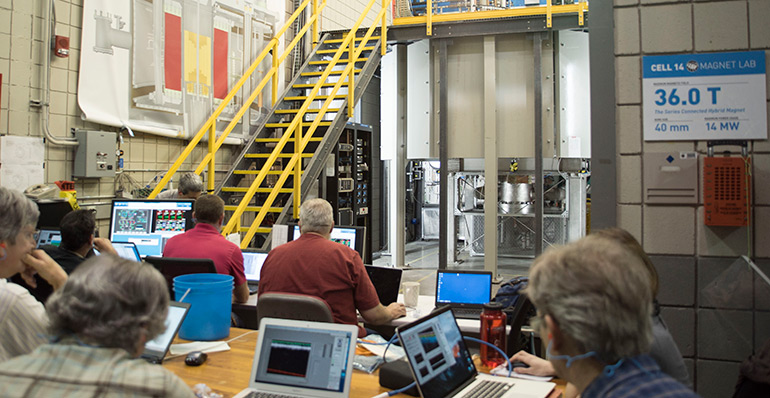
Magnet operators and engineers during the first system tests.
Image credit: Stephen Bilenky
Over time, they found their team's interdisciplinary experts were able to anticipate obstacles and proactively avoid problems — even if it meant delaying the entire project. While designing the superconducting part of the SCH, members of the Magnet Science & Technology group noticed that other magnet laboratories using niobium tin as a primary component of superconducting coils were seeing signs of degradation after relatively little use. Rather than jeopardize the quality of their end product, the group put construction on hold while they developed new conducting technology. MagLab researchers then joined forces with new international partners, including Helmholtz Zentrum Berlin (HZB), to design and test prototypes.
"We couldn't just depend on our own little world," explained Dixon. "We got help from people in Germany, Switzerland, Italy and throughout the world on this project. You have to go outside your bounds and comfort zones to get help to finish this type of project."
The end result: Magnet parts that can better stand the test of time. HZB scientists even got their own SCH magnet out of the collaboration, which they use for neutron science.
That two-year detour gave NMR scientists the extra time they needed to develop custom probes — high-tech arms that help researchers put their samples into a magnet — needed to use the SCH for NMR research. But designing probes compatible with a magnet that didn't yet exist was its own challenge.
"There was no other magnet like it around," explained Dixon, "so you couldn't go buy a probe."
NMR scientists also worked with Jeffery Schiano, an associate professor of electrical engineering at Penn State University, on developing special instrumentation to offset the SCH's expected unstable fields. Though the SCH didn't exist, Schiano and his graduate students visited the MagLab to test their ideas on other magnets.
Worth the wait
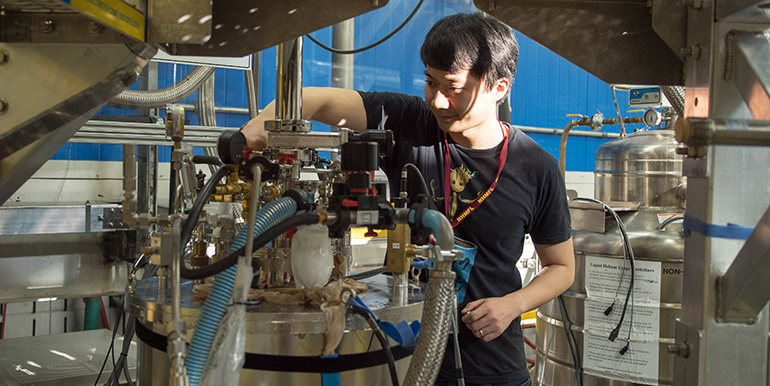
Jia Li, an assistant professor of physics at Brown University, conducting an experiment on graphene, a unique two-dimensional material.
Image credit: Stephen Bilenky
More than 120,000-person hours went into creating the SCH — and as they say, good things come to those who wait. The multi-year, interdisciplinary collaboration, sprinkled with frustration and setbacks, pushed magnet developers’ capabilities (and patience). But it's now having profound impacts on NMR and materials research.
"When the magnet did come to field, the science community had a really good list of projects — realistic projects — ready to go," explained Brey. The magnet opened for research in January 2018.
The SCH magnet now provides unique opportunities for researchers. At 36 teslas, it boasts record-breaking field homogeneity, while being more cost- and energy-efficient than similar magnets. It is also now the strongest magnet used for NMR in the world, and is already opening doors for new discoveries in biology, chemistry and materials science. The SCH's high, stable field offers super-high data resolution, allowing researchers to observe more elements (including oxygen) and molecular structures, such as complex proteins, than ever before. There are even plans to configure the instrument in future years so that it can be used as an ultra-powerful MRI machine.
This feat has not only advanced magnet development and scientific understanding, but has shaped those who worked on it, as well.
"I can see my communication skills have improved a lot," said Paulino, who has since become a postdoc at the University of California San Francisco. "I can now relate information, and different facets of information, to different people."
Read more about the Series Connected Hybrid.
By Abbey Engleman




